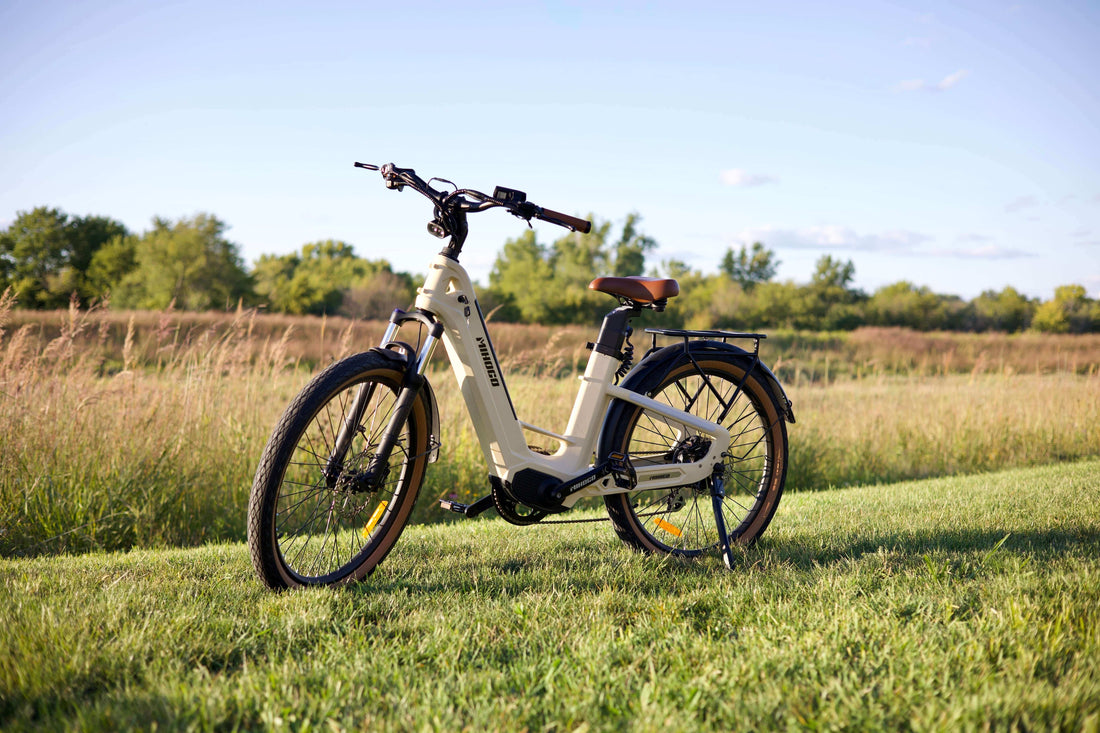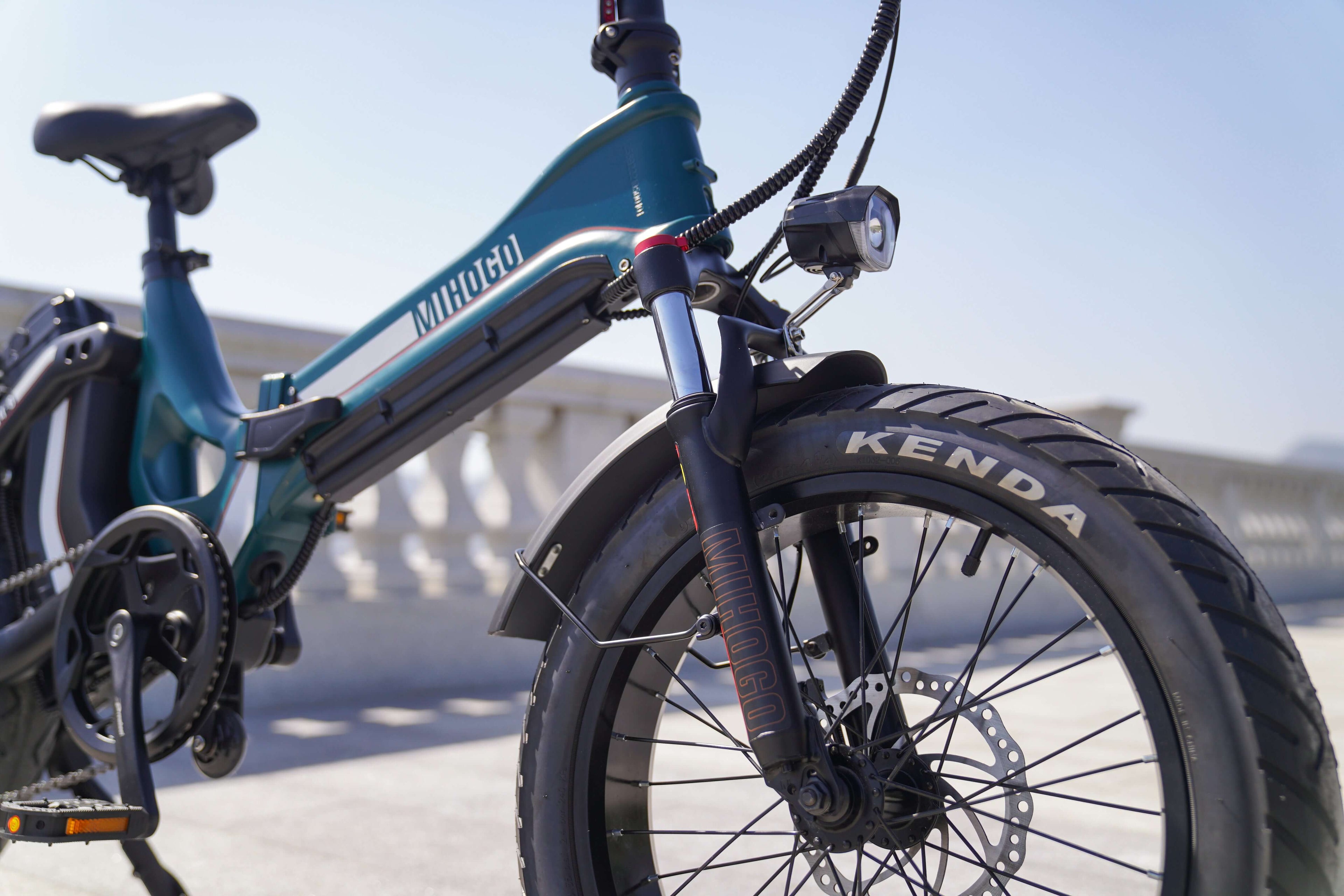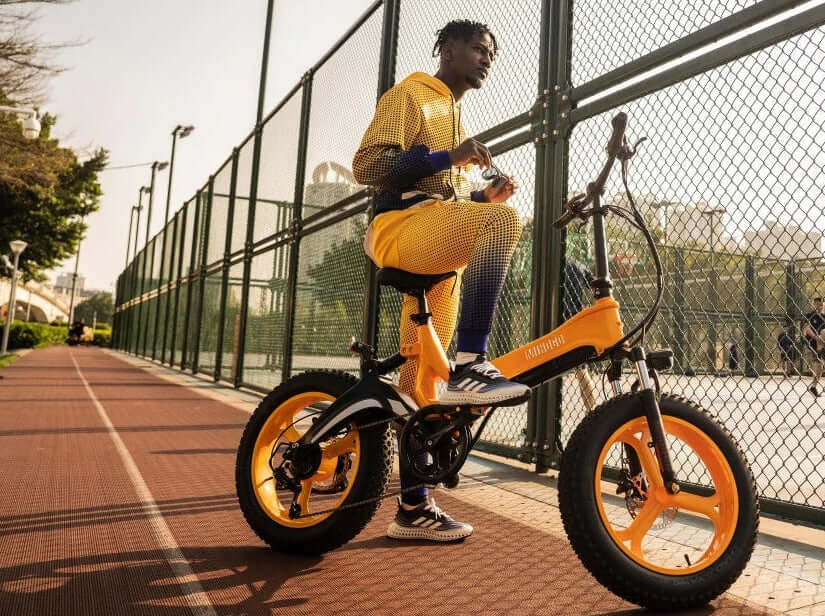The Four Motor Power Categories Explained
250W Motors: The European Standard
The maximum motor power for e-bikes in the EU is 250 watts, as outlined by EU Regulation 168/2013. This isn't just a recommendation—it's the law that keeps your e-bike classified as a bicycle rather than a motor vehicle.
Perfect for:
- Flat terrain and gentle hills
- Daily urban commuting
- Lightweight riders (under 75kg)
- EU legal compliance without registration
Key Benefits:
- No license, insurance, or registration required
- Access to all bike lanes and paths
- Peak power can reach 600W or more for short bursts while remaining legally compliant
- Excellent battery efficiency for extended range
The beauty of modern 250W motors lies in their intelligence. While continuous power is limited to 250W, peak power delivery can exceed 750W for acceleration and hill climbing, providing the boost you need when tackling European city hills or starting from traffic lights.
500W Motors: The Versatile Sweet Spot
500W motors represent the perfect middle ground for riders who need more power than EU regulations allow but don't want to venture into motorcycle territory.
Ideal for:
- Moderate to steep hills
- Riders weighing 75-100kg
- Carrying cargo or passengers
- Versatile all-terrain riding
Important Note: In most European countries, 500W motors classify your bike as an electric moped, requiring registration, insurance, and often a license. However, some countries like Switzerland have more liberal standards, allowing easier access to higher-powered e-bikes.
750W Motors: Maximum Power in Most Regions
Germany's trade body ZIV has proposed a new legal framework allowing maximum assistance power of 750W at the drive wheel, suggesting future regulatory changes may accommodate higher power ratings.
Best suited for:
- Steep terrain and mountain trails
- Heavy riders (100kg+) or substantial cargo
- Maximum US state compliance
- Performance-oriented applications
1000W+ Motors: Specialized Applications
Motors exceeding 1000W enter specialized territory, often requiring:
- Vehicle registration and licensing
- Insurance coverage
- Restricted access to bike infrastructure
- Enhanced safety equipment
Current European E-Bike Trends Shaping 2025
The global e-bike market is projected to reach USD 87.2 billion by 2032, driven by several key innovations:
Smart Motor Technology Valeo's Cyclee motor system features a 48V mid-drive motor with 130 Nm of torque and an integrated automatic gearbox, representing the future of intelligent power delivery.
Mid-Drive Dominance Mid motor segment contributes 68.4% of the European market share in 2025, offering superior riding experience and natural pedal assistance.
Battery Integration Lithium-ion batteries hold 56.3% of the total revenue share, driven by superior energy density and reduced charging time.
Choosing Your Motor Power: A Practical Framework
Assess Your Riding Profile
Urban Commuter (Choose 250W):
- Daily distances under 25km
- Mostly flat with occasional gentle hills
- Priority on legal compliance and efficiency
- Access to comprehensive bike infrastructure
Recreational Explorer (Consider 500W):
- Weekend adventures and longer rides
- Mixed terrain including moderate hills
- Occasional cargo or passenger transport
- Willing to navigate regulatory requirements
Performance Enthusiast (Evaluate 750W+):
- Challenging terrain and steep climbs
- Heavy loads or demanding applications
- Maximum power and capability priority
- Understanding of legal implications
Factor in Your Physical Characteristics
Rider Weight Impact on Motor Selection:
- Under 70kg: 250W sufficient for most European terrain
- 70-90kg: 500W recommended for versatility
- 90kg+: 750W or higher for optimal performance
Cargo Considerations: Regular cargo transport adds significant weight and rolling resistance. ZIV proposals suggest separate framework conditions for cargo bikes weighing more than 300kg.
Understanding Peak vs. Continuous Power
Modern e-bike motors deliver power in two distinct ways:
Continuous/Nominal Power: The sustained output for extended periods Peak Power: Short-burst capability for acceleration and climbing
A motor rated at 500W nominal might peak at 750W or more for several seconds. This distinction explains why legal 250W motors can feel surprisingly powerful during real-world riding.
2025 Motor Technology Advances
Torque Sensor Integration
Brands like Shimano (Di2), SRAM (Eagle ASX), and Bosch (E-ASI) are implementing automated shifting systems that work seamlessly with motor power delivery.
Regenerative Braking
Ultra-compact hub motors now offer 70 Nm of torque and regenerative braking for premium urban e-bikes.
Smart Power Management
AI algorithms adjust motor output based on terrain, rider weight, and riding style, with Bosch's Smart System 2.0 offering 20% longer battery life.
Legal Considerations Across Europe
Standard EU Regulations
The motor cannot be higher than 250 watts and assistance is only available up to 25 km/h for classification as a standard bicycle.
Speed Pedelec Category
S-pedelecs with max speed of 45 km/h have motor output limited to 4000 watts under Regulation 168/2013, but require licensing and insurance.
Country-Specific Variations
While EU regulations provide the baseline, individual countries may impose additional requirements for registration, helmet use, and infrastructure access.
Future-Proofing Your Motor Choice
Regulatory Evolution
Several EU ministries announced in 2024 that current vehicle regulations would be revised, potentially affecting existing e-bike power limits.
Technology Integration
V2X technology trials in Amsterdam show 30% reduction in accidents at equipped intersections, suggesting future smart infrastructure integration.
Making Your Decision: Power Recommendations by Use Case
Daily Urban Commuting
Recommended: 250W mid-drive motor Why: Legal compliance, excellent efficiency, sufficient power for city riding
Weekend Adventures
Recommended: 500W system (where legally permitted) Why: Versatility for varied terrain, adequate power reserves
Cargo and Family Transport
Recommended: 750W with high torque output Why: Essential power for heavy loads and passenger safety
Mountain and Trail Riding
Recommended: 1000W+ specialized systems Why: Maximum climbing capability and challenging terrain performance
Maximizing Your Motor's Potential
Proper Gearing
Shifting to easier gear on hills allows mid-drive motors to spin at optimal RPM range, delivering maximum power without strain.
Battery Optimization
Yamaha's new solid-state battery charges in 10 minutes and provides 120km range, showing the importance of pairing appropriate power with advanced battery technology.
Maintenance Considerations
Regular maintenance ensures optimal power delivery and extends motor lifespan, crucial for higher-wattage systems operating under greater stress.
The Bottom Line: Finding Your Perfect Power Match
Motor power selection isn't just about maximum wattage—it's about matching capability to your specific needs while navigating legal requirements. Europe's e-bike market forecasts 14.2% CAGR from 2025 to 2033, driven by riders making informed decisions about their mobility needs.
Whether you choose the efficiency of 250W, the versatility of 500W, or the power of 750W+, understanding your riding requirements ensures years of satisfying electric-assisted cycling.
Ready to find your perfect e-bike motor match? Explore our comprehensive selection of European-compliant electric bikes designed for every power requirement and riding style.
Related Resources
For deeper insights into e-bike technology and selection, explore these authoritative resources:
- European Cyclists' Federation E-bike Policy - Comprehensive policy information
- Wikipedia: Electric Bicycle Laws - Global legal framework reference
- EU Vehicle Type-Approval Regulation 168/2013 - Official regulatory text






